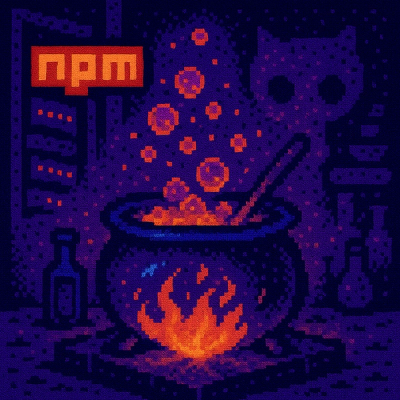
Research
/Security News
9 Malicious NuGet Packages Deliver Time-Delayed Destructive Payloads
Socket researchers discovered nine malicious NuGet packages that use time-delayed payloads to crash applications and corrupt industrial control systems.
django-pagination-fork
Advanced tools
django-pagination allows for easy Digg-style pagination without modifying
your views.
There are really 5 steps to setting it up with your projects (not including installation, which is covered in INSTALL.txt in this same directory.)
List this application in the INSTALLED_APPS portion of your settings
file. Your settings file might look something like::
INSTALLED_APPS = (
# ...
'pagination',
)
Install the pagination middleware. Your settings file might look something like::
MIDDLEWARE_CLASSES = (
# ...
'pagination.middleware.PaginationMiddleware',
)
If it's not already added in your setup, add the request context processor. Note that context processors are set by default implicitly, so to set them explicitly, you need to copy and paste this code into your under the value TEMPLATE_CONTEXT_PROCESSORS::
("django.core.context_processors.auth",
"django.core.context_processors.debug",
"django.core.context_processors.i18n",
"django.core.context_processors.media",
"django.core.context_processors.request")
Add this line at the top of your template to load the pagination tags:
{% load pagination_tags %}
Decide on a variable that you would like to paginate, and use the
autopaginate tag on that variable before iterating over it. This could
take one of two forms (using the canonical object_list as an example
variable):
{% autopaginate object_list %}
This assumes that you would like to have the default 20 results per page. If you would like to specify your own amount of results per page, you can specify that like so:
{% autopaginate object_list 10 %}
Note that this replaces object_list with the list for the current page, so
you can iterate over the object_list like you normally would.
Now you want to display the current page and the available pages, so somewhere after having used autopaginate, use the paginate inclusion tag:
{% paginate %}
This does not take any arguments, but does assume that you have already called autopaginate, so make sure to do so first.
That's it! You have now paginated object_list and given users of the site
a way to navigate between the different pages--all without touching your views.
In django-pagination, there are no required settings. There are, however, a small set of optional settings useful for changing the default behavior of the pagination tags. Here's an overview:
PAGINATION_DEFAULT_PAGINATION
The default amount of items to show on a page if no number is specified.
PAGINATION_DEFAULT_WINDOW
The number of items to the left and to the right of the current page to
display (accounting for ellipses).
PAGINATION_DEFAULT_ORPHANS
The number of orphans allowed. According to the Django documentation,
orphans are defined as::
The minimum number of items allowed on the last page, defaults to zero.
PAGINATION_INVALID_PAGE_RAISES_404
Determines whether an invalid page raises an Http404 or just sets the
invalid_page context variable. True does the former and False
does the latter.
FAQs
A fork of django-pagination
We found that django-pagination-fork demonstrated a healthy version release cadence and project activity because the last version was released less than a year ago. It has 1 open source maintainer collaborating on the project.
Did you know?

Socket for GitHub automatically highlights issues in each pull request and monitors the health of all your open source dependencies. Discover the contents of your packages and block harmful activity before you install or update your dependencies.

Research
/Security News
Socket researchers discovered nine malicious NuGet packages that use time-delayed payloads to crash applications and corrupt industrial control systems.

Security News
Socket CTO Ahmad Nassri discusses why supply chain attacks now target developer machines and what AI means for the future of enterprise security.

Security News
Learn the essential steps every developer should take to stay secure on npm and reduce exposure to supply chain attacks.